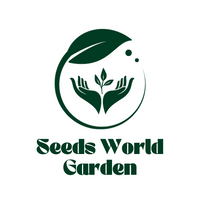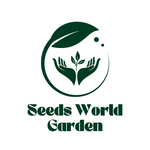Quantity: 100+ Seeds
Color: As picture
Free Shipping and Buy 2 Get 1 Free
1. A seed is a small, hard, dry structure found in some plants that is capable of growing into a new plant. Seeds are the most important part of any plant, as they are what allow the plant to propagate itself and spread. Seeds vary in size, shape, and color, and can come from a variety of different plants.
2. Seeds are typically made up of a seed coat, endosperm, and embryo. The seed coat is the outer layer that protects the seed, while the endosperm is the inner layer that contains the nutrients the seed needs to grow. The embryo is the core of the seed, and contains the genetic material that will be used to create the new plant.
3. Seeds can be found in a variety of ways, including through harvesting, collecting, and buying. Seeds from different plants will have different properties, such as size, color, shape, and viability. Harvested and collected seeds are often obtained from wild plants, while purchased seeds are typically from cultivated plants.
4. Caring for seeds is very important, as they need to be stored properly in order to ensure they remain viable. Seeds should be stored in a cool, dry place, and should not be exposed to direct sunlight. This will help to keep the seeds viable for a longer period of time.
5. Seeds are an important part of any garden or landscape, as they provide the foundation for all plants. Without seeds, the world would be a much different place, as they allow for the growth and propagation of plants. By caring for seeds properly, gardeners and landscapers can ensure the continued growth of the plants they love.
How to Grow Your :
1. Soak in water for 24 to 48 hours before you t them. This allows moisture to penetrate the coat and leads to swelling of the ’s parts to spur germination.
2. Find a location with well-drained, organic-rich, sandy or silt loam and with a minimum average temperature of about 60 degrees Fahrenheit during the t’s early growth. The most favorable temperature range is between 75 to 80 degrees. The t should ideally receive six hours of sun per.
3. Till the soil to rid it of weeds and to increase air circulation. Apply compost to the soil after tilling.
4. Place two or three in a hole about ½ to 1 inch deep in the soil along a fence or under a 6-foot-tall trellis form. The holes should be 15 to 23 inches apart and rows 3 to 5 feet apart.You can also start in small plastic pots in a commercial soil mix.
Shipping:
All orders Free Shipping and Buy 2 Get 1 Free. Normally North American delivery time will take 7-14 days (shipping delays due to large orders will add 1-3 weeks depending on time). Other areas please wait 14-28 days for the order to arrive.
RETURN POLICY
We have a 30-day return policy, which means you have 30 days after receiving your item to request a return.


